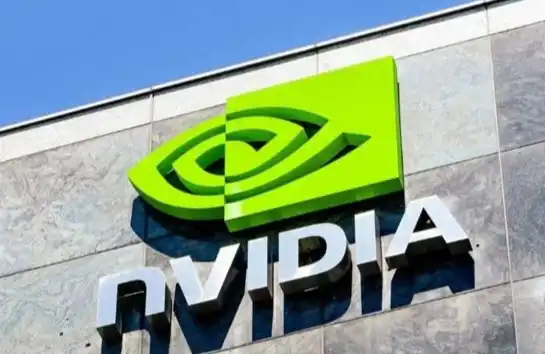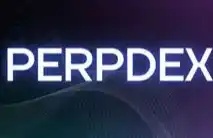Perp DEX Battle: Who is the Winner?
Original Article Title: The Perp DEX Wars of 2025: Hyperliquid, Aster, Lighter, and EdgeX
Original Article Author: @stacy_muur
Translation: Peggy, BlockBeats
Editor's Note: The decentralized perpetual contract exchange (Perp DEX) arena has undergone dramatic changes over the past year: from Hyperliquid's absolute dominance to the rise of Aster, Lighter, and EdgeX, the market landscape is being reshaped.
This article delves deep into the four platforms from perspectives such as technical architecture, key metrics, risk events, and long-term viability, aiming to help readers see the "truth behind the data" rather than relying solely on trading volume rankings.
The following is the original text:
In 2025, the decentralized perpetual contract (perp DEX) market experienced explosive growth. In October 2025, the monthly trading volume of perpetual contract DEX exceeded $12 trillion for the first time, rapidly attracting the attention of retail traders, institutional investors, and venture capital funds.

Over the past year, Hyperliquid almost monopolized the market, reaching its peak in May of this year, occupying 71% of on-chain perpetual contract trading volume. However, by November, its market share had plummeted to only 20%, with emerging competitors quickly taking over:
- Lighter: 27.7%
- Aster: 19.3%
- EdgeX: 14.6%

In this rapidly evolving ecosystem, the four leading players have already emerged, engaging in fierce competition for industry dominance:
@HyperliquidX—The veteran champion of on-chain perpetual contracts
@Aster_DEX—The high-volume, controversial "rocket"
@Lighter_xyz—The disruptor with zero fees and native zk
@edgeX_exchange—The "dark horse" quietly but deeply integrated with institutions
This in-depth investigation aims to dispel the fog, analyze the technical strength, key metrics, controversial points, and long-term viability of each platform.
Part 1: Hyperliquid, the Undisputed King
Why is Hyperliquid Dominant?
Hyperliquid has solidified its position as the leading decentralized perpetual contract trading platform, with a peak market share of over 71%. Despite competitors grabbing headlines with explosive trading volume growth, Hyperliquid remains a structural pillar of the entire perpetual contract DEX ecosystem.

Technological Foundation
Hyperliquid's advantage stems from a revolutionary architectural decision: building a custom Layer 1 blockchain designed specifically for derivative trading. Its HyperBFT consensus mechanism achieves sub-second order confirmation and supports 200,000 transactions per second, performance that rivals or even surpasses centralized exchanges.
The Truth About Open Interest
Competitors often attract attention with astonishing 24-hour trading volumes, but the metric that truly reveals capital deployment is Open Interest (OI), which represents the total value of all outstanding perpetual contracts.
Trading volume shows activity, while open interest shows capital commitment.
According to 21Shares data, as of September 2025: Aster holds about 70% of total trading volume; Hyperliquid briefly fell to around 10%.
However, this is merely a volume advantage, and trading volume is the metric most easily manipulated through incentives, rebates, market maker frequent trading, or even "volume washing" behavior.
The latest 24-hour open interest data shows:
- Hyperliquid: $8.014B
- Aster: $2.329B
- Lighter: $1.591B
- edgeX: $780.41M
Total OI of the top four platforms: $12.714B
Hyperliquid's share: approximately 63%
This means that Hyperliquid holds open positions close to two-thirds of the entire market, surpassing the sum of Aster, Lighter, and edgeX.
Open Interest Market Share (24h)
-Hyperliquid: 63.0%
-Aster: 18.3%
-Lighter: 12.5%
-edgeX: 6.1%

This metric reflects traders' willingness to hold funds overnight rather than purely for rebate mining or high-frequency trading.
Hyperliquid: High OI/Volume Ratio (around 0.64), indicating that a significant amount of trading volume transitions into sustained open interest.
Aster & Lighter: Low ratios (around 0.18 and 0.12), indicating frequent trading but low fund retention, typical of incentive-driven behavior rather than stable liquidity.
Full Picture
Volume (24h): Indicates short-term activity
Open Interest (24h): Indicates retained risk capital
OI/Volume Ratio (24h): Reveals genuine trading vs incentive-driven trading
From all OI-related metrics, Hyperliquid is the structural leader: highest open interest; largest share of committed funds; strongest OI/Volume ratio; total OI exceeding the sum of the other three platforms
Trading volume rankings may fluctuate, but open interest reveals the true market leader, which is Hyperliquid.
Real-world Validation
During the liquidation event in October 2025, $190 billion in positions were liquidated, and Hyperliquid remained fully operational during the massive trading peak.
Institutional Recognition
21Shares has submitted a Hyperliquid (HYPE) product application to the U.S. SEC and listed a regulated HYPE ETP on the Swiss stock exchange. These developments (including coverage on platforms like CoinMarketCap) demonstrate increasing institutional access to HYPE. The HyperEVM ecosystem is also expanding, although public data has not verified the exact claims of "180+ projects" or "$4.1B TVL."
Conclusion
Based on the current record, exchange listing status, and ecosystem growth, Hyperliquid demonstrates strong momentum and increasing institutional recognition, further solidifying its position as a leading DeFi derivatives platform.
Part Two: Aster, Explosive Growth
Aster's Positioning
Aster is a multi-chain perpetual contract trading platform launched in early 2025 with a clear goal: to provide users with high-speed, high-leverage derivative trading on networks such as BNB Chain, Arbitrum, Ethereum, and Solana without the need for cross-chain asset transfer.
The project did not start from scratch but rather originated from the merger of Asterus and APX Finance at the end of 2024, combining APX's mature perpetual contract engine with Asterus' liquidity technology.
Explosive Rise
Aster was listed on September 17, 2025, at $0.08 and surged to $2.42 in just one week, a staggering 2800% increase. The daily trading volume peaked at over $700 billion, momentarily dominating the entire perpetual contract DEX market.
The fuel for this "rocket"? CZ, the Binance founder, supported Aster through YZi Labs and personally promoted it, causing the token to skyrocket. Within the first 30 days of listing, Aster's total trading volume exceeded $320 billion, briefly capturing over 50% market share.

DefiLlama Delisting Event
On October 5, 2025, as the most trusted data source in the crypto industry, DefiLlama removed Aster's data due to its trading volume showing almost perfect correlation with Binance's volume (1:1 correlation).
Real trading platforms exhibit natural fluctuations, and perfect correlation only signifies one thing: data manipulation.
Evidence includes:
- Trading volume patterns perfectly synchronized with Binance (for all pairs like XRP, ETH, etc.)
- Aster's refusal to provide trading data, making it impossible to verify the authenticity of trades
- 96% of ASTER tokens held in 6 wallets
-Transaction Volume/OI Ratio soared to over 58+ (healthy level should be under 3)
ASTER token immediately plummeted by 10%, dropping from $2.42 to around $1.05
Aster's Defense
CEO Leonard claimed that this correlation was merely "airdrop users" hedging on Binance. But if true, why refuse to provide public data for verification?
Weeks later, Aster relisted, but DefiLlama warned: "Still a black box, we cannot verify the data."
What It Truly Offers
To be fair, Aster does have some technical highlights: 1001x leverage; hidden orders; multi-chain support (BNB, Ethereum, Solana); stakable collateral
Furthermore, Aster is building the Aster Chain based on zero-knowledge proof to achieve privacy protection. However, even great technology cannot mask false metrics.
Conclusion
Conclusive evidence:
-Perfect correlation with Binance = Wash trading
-Refusal of transparency = Concealment of fact
-96% token concentration = High centralization
-DefiLlama delisting = Reputation collapse
Aster leveraged CZ's influence and fake trading volume to capture significant value but failed to establish a genuine infrastructure. Perhaps surviving due to Binance's backing, its reputation is irreparably damaged.
For Traders: High risk, you are betting on CZ's narrative, not real growth. Please set tight stop losses.
For Investors: Avoid, too many risk signals, better options exist in the market (e.g., Hyperliquid).
Part III: Lighter, Impressive Tech, Dubious Metrics
Technical Edge
Lighter stands out. Founded by a former Citadel engineer and backed by Peter Thiel, a16z, Lightspeed (raised $68 million, $15 billion valuation), its core tech involves encrypting validation for each transaction using Zero-Knowledge Proof (ZK).
As an Ethereum Layer 2 (L2), Lighter inherits Ethereum's security through an "escape hatch" mechanism – even in platform failure, users can still retrieve funds via smart contract. On the other hand, L1 application chains lack this security guarantee.
Lighter launched on October 2, 2025, and within weeks, its TVL surpassed $11 billion, with a daily trading volume of $70-80 billion and over 56,000 users.
Zero Fees = Aggressive Strategy
Lighter charges 0 fees for both placing and taking orders, completely disrupting the decision-making of fee-sensitive traders.
The strategy is simple: seize market share through an unsustainable economic model, build user loyalty, and later achieve profitability.

October 11 Stress Test
After 10 days of the mainnet launch, the crypto market experienced the largest liquidation event in history, with $190 billion in positions being liquidated.
Good news: The system remained operational during the 5-hour turmoil, and LLP provided liquidity as competitors retreated.
Bad news: The database crashed after 5 hours, leading to a platform outage for 4 hours.
Worse news: LLP incurred losses, while Hyperliquid's HLP and EdgeX's eLP were profitable.
Founder Vlad Novakovski explained: The original plan was to upgrade the database on Sunday, but the extreme volatility on Friday preemptively crashed the old system.
Volume Manipulation
Data strongly suggests wash trading behavior:
- 24-hour trading volume: $127.8 billion
- Open Interest (OI): $15.91 billion
- Volume/OI ratio: 8.03
- Healthy level = below 3, suspicious above 5, 8.03 extremely abnormal.
Comparison:
Hyperliquid: 1.57 (natural)
EdgeX: 2.7 (moderate)
Aster: 5.4 (concerning)
Lighter: 8.03 (severe wash trading)
For every $1 of deployed funds, traders are generating $8 in trading volume—frequent turnover wash trading instead of genuine positions.
30-day data confirms: $2940 billion trading volume vs. $470 billion cumulative OI = 6.25 ratio, still well above a reasonable level.
Airdrop Question
The Lighter loyalty program is highly aggressive. Loyalty points will be converted into LITER tokens at TGE (expected in Q4 2025/Q1 2026). The OTC market quotes loyalty points at $5-100+, with a potential airdrop value of tens of thousands of dollars, making the explosive trading volume easy to understand.
Key question: What will happen after TGE? Will users hodl or will trading volume collapse?
Conclusion
Pros:
Cutting-edge technology (ZK verification in place)
Zero fees = a true competitive advantage
Inherits Ethereum's security features
Top-tier team with strong capital support
Concerns:
8.03 transaction volume/OI ratio = significant wash trading
LLP experienced losses in stress tests
4-hour outage raised doubts
Post-airdrop user retention unverified
Key difference from Aster: No wash trading accusations, no DeFiLlama delisting. The high ratio reflects aggressive but temporary incentives, not systemic fraud.
Bottom-line assessment: Lighter boasts world-class technology but is shrouded in suspicious metrics. Can it convert wash trading users into genuine users? Technology says "can," history says "maybe not."
To wash trading users: Opportunity looks good pre-TGE.
To investors: Wait 2-3 months post-TGE, observe if trading volume persists.
Probability assessment: 40% becomes a top-three platform, 60% devolves into another "wash trading farm" with just better underlying technology.
Part 4: EdgeX, Institutional-Grade Professional Player
Advantages of Amber Group
EdgeX operates differently. It originated from Amber Group's incubator (managing $5 billion in assets), with team members from Morgan Stanley, Barclays, Goldman Sachs, and Bybit. This isn't "crypto-native" learning from finance but rather traditional finance (TradFi) experts bringing institutional-grade experience to DeFi.
Amber's market-making DNA directly empowers EdgeX: deep liquidity, tight spreads, and execution quality comparable to centralized exchanges. The platform launched in September 2024 with a clear goal: achieve CEX-level performance without compromising self-custody.
Based on StarkEx (StarkWare's mature ZK engine), EdgeX can process 200,000 orders per second, with latencies below 10 milliseconds, comparable to Binance in speed.
Lower Fees than Hyperliquid
EdgeX excels in fees compared to Hyperliquid:
Taker Fee: EdgeX 0.038% vs Hyperliquid 0.045%
Maker Fee: EdgeX 0.012% vs Hyperliquid 0.015%
For a trader with a monthly volume of $10 million, savings can range from $7,000 to $10,000 per year, and on retail-level orders (<$6 million), EdgeX provides better liquidity, tighter spreads, and lower slippage.
Real Revenue, Healthy Metrics
Unlike Lighter's zero-fee model or Aster's questionable data, EdgeX has built real, sustainable revenue:
Total Value Locked (TVL): $4.897 billion
24-Hour Trading Volume: $82 billion
Open Interest (OI): $7.8 billion
30-Day Revenue: $41.72 million (up 147% from Q2)
Annualized Revenue: $5.09 billion (second only to Hyperliquid)
Trading Volume/OI Ratio: 10.51 (seemingly high but requires deeper analysis)
At first glance, 10.51 may seem high, but context is crucial: EdgeX initially employed an aggressive rewards program to incentivize liquidity, and as the platform matured, this ratio has been steadily improving. More importantly, EdgeX has maintained healthy revenue during this period, proving the presence of real traders rather than purely incentivized users.

October Stress Test
During the market crash on October 11th ($190 billion liquidated), EdgeX performed admirably:
No Downtime (Lighter had a 4-hour downtime)
eLP Treasury remained profitable (Lighter's LLP incurred losses)
Liquidity Provider Annualized Yield 57% (industry-leading)
The eLP (EdgeX Liquidity Pool) demonstrated outstanding risk management capabilities during extreme volatility, remaining profitable while competitors faltered.
EdgeX's Differentiation Advantage
Multi-Chain Flexibility: Supports Ethereum L1, Arbitrum, BNB Chain; Collateral supports USDT and USDC; Cross-chain deposits and withdrawals (Hyperliquid limited to Arbitrum only).
Best Mobile Experience: Official iOS and Android apps (not available on Hyperliquid), user-friendly interface for easy portfolio management on-the-go.
Asia Market Strategy: Actively targeting the Asian market through localized support and participation in the Korean Blockchain Week, seizing the region overlooked by Western competitors.
Transparent Incentive Program: 60% Trading Volume, 20% Referral, 10% TVL/Treasury, 10% Liquidation/OI
Clear Statement: "No volume farming rewards," and metrics validate this — the trading volume/OI ratio is improving, not deteriorating.
Challenges
Market Share: Captures only 5.5% of perpetual contract DEX open interest, requiring more aggressive incentives (risk of score manipulation) or significant partnerships to grow.
Lack of "Killer Feature": EdgeX performs solidly in all aspects but lacks disruptive innovation, positioning itself as a "business class" option, professional but not dazzling.
Unable to Compete with Lighter on Fees: Zero fees make EdgeX's "below Hyperliquid" advantage less appealing.
Late TGE Timing: Expected in Q4 2025, missing out on the initial airdrop frenzy.
Conclusion
EdgeX is the choice for professional users — reliability triumphs over extravagance.
Advantages:
Amber Group Institutional Support
Annual Revenue of $5.09 Billion
Treasury Profits in Stress Testing, APY up to 57%
Lower fees than Hyperliquid
No volume farming scandals, clean metrics
Multi-chain support + Best mobile experience
Concerns:
Small market share (5.5% OI)
Trading volume/OI ratio still high (but improving)
Lack of unique selling points
Zero fee competition pressure
Target Audience:
Asian traders requiring localized support
Institutional Users, Emphasizing Amber Liquidity
Conservative Traders, Prioritizing Risk Management
Mobile-First Users
LP Investors Seeking Stable Returns
Bottom Line Assessment: EdgeX is poised to capture a 10-15% market share in the Asian market, among institutions and conservative traders. It will not threaten Hyperliquid's dominant position, but it doesn't need to—it is building a sustainable, profitable niche market.
Think of it as the "Kraken of Perpetual Contract DEXs": Not the largest, not the flashiest, but sturdy, professional, and trusted by mature users who value execution quality.
For High APY Users: Moderate opportunities, less intense competition compared to other platforms.
For Investors: Suitable for small position diversified investments, low risk, low return.
Comparative Analysis: Perp DEX War

Trading Volume/Open Interest (OI) Analysis
Industry Standard: Healthy Ratio ≤ 3
Hyperliquid: 1.57 ✅ Signifying a strong organic trading pattern
Aster: 4.74 ⚠️ Slightly high, reflecting a lot of incentive activity
Lighter: 8.19 ⚠️ High ratio implies incentive-driven trading
EdgeX: 10.51 ⚠️ Pointing to the impact of incentive programs, but showing improvement
Market Share: OI Distribution
Total Market: Approximately $13B in OI
Hyperliquid: 62% - Market Leader
Aster: 18% - Strong Second Tier
Lighter: 12% - Sustained Growth
EdgeX: 6% - Focused on a niche market
Platform Overview
Hyperliquid - Seasoned Leader
Occupying 62% market share, stable metrics
Annual Revenue $2.9B, active buyback program
Community Ownership Model, Reliable Performance
Advantages: Market Leadership, Sustainable Economic Model
Rating: A+
Aster - High Growth, High Question Marks
Strongly Integrated in BNB Ecosystem, CZ Endorsement
Faced DefiLlama Data Integrity Issue in October 2025
Multi-chain Strategy Driving Adoption
Advantages: Ecosystem Support, Retail User Coverage
Concern: Need to Monitor Data Transparency Issue
Rating: C+
Lighter - Tech Innovator
Zero Fee Model, Advanced ZK Verification
Top-tier Investors (Thiel, a16z, Lightspeed)
Pre-TGE Phase (Q1 2026), Limited Performance Data
Advantages: Technical Innovation, Ethereum L2 Security
Concern: Business Model Sustainability, Post-Airdrop User Retention
Rating: Incomplete (Waiting for TGE Performance)
EdgeX - Institutional Focus
Endorsed by Amber Group, Professional Execution
$509M Annualized Revenue, Stable Treasury Performance
Asia Market Strategy, Mobile-first Approach
Advantages: Institutional Reputation, Steady Growth
Concern: Small Market Share, Competitive Positioning
Rating: B
Investment Considerations
Exchange Platform Selection:
Hyperliquid: Deepest Liquidity, Reliable Validation
Lighter: Zero Fees, Suitable for High-frequency Traders
EdgeX: Lower Fees than Hyperliquid, Excellent Mobile Experience
Aster: Multi-chain Flexibility, BNB Ecosystem Integration
Token Investment Timeline:
HYPE: Now Available, $37.19
ASTER: Trading at $1.05, watch for developments
LITER: TGE 2026 Q1, metrics to be assessed post-launch
EGX: TGE 2025 Q4, monitor early performance
Key Takeaways
Market Maturity: Clear differentiation in the Perp DEX space, with Hyperliquid establishing dominance through sustainable metrics and community collaboration.
Growth Strategies: Each platform targets distinct user groups—Hyperliquid (Professional), Aster (Retail/Asia), Lighter (Technical), EdgeX (Institutional).
Metrics Focus: Metrics like Trading Volume/OI ratio and Revenue Generation ratio better reflect performance than just trading volume.
Future Outlook: Post-TGE performance of Lighter and EdgeX will determine long-term competitiveness; Aster's future hinges on resolving transparency issues and maintaining ecosystem support.
Welcome to join the official BlockBeats community:
Telegram Subscription Group: https://t.me/theblockbeats
Telegram Discussion Group: https://t.me/BlockBeats_App
Official Twitter Account: https://twitter.com/BlockBeatsAsia


 Forum
Forum Finance
Finance
 Specials
Specials
 On-chain Eco
On-chain Eco
 Entry
Entry
 Podcasts
Podcasts
 Activities
Activities








 0
0